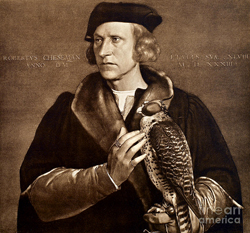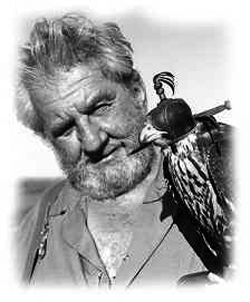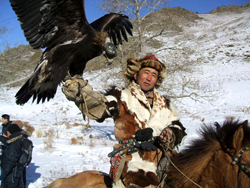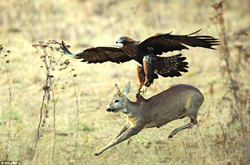Falconry, Leashed Tracking Dog, Wildlife Rehabilitator Exams Slated for August
By Frank Parlato
 |
 |
 |
 |
Examinations for a trio of unique, somewhat rare, and oddly different license examinations are being offered by the Department of Environmental Conservation in August.
Outdoorsmen seeking an Apprentice Falconry license, Wildlife Rehabilitator license, or Leashed Tracking Dog Handler license can take the tests at 10 a.m. on Friday, Aug. 16, at the State Department of Environmental Conservation (DEC) regional office at 270 Michigan Ave., in Buffalo.
The deadline for registration is August 2.
For those who don't know about falconry, but might find it something they wish to pursue, it is the art of hunting with a trained bird of prey. It was a popular medieval sport of the noble classes and evidence suggests falconry may date back to a far earlier time when men hunted strictly for food.
Not only are falcons employed, but also eagles, buzzards, hawks, osprey and other birds of prey. Owls are rarely used.
While the Harris Hawk and Red-tailed Hawk are more widely used by experienced falconers, many switch to accipiters or large falcons when they get their general license. The falconer's traditional choice is the Northern Goshawk and Peregrine Falcon.
In New York, only the American Kestrel and the Red-tailed Hawk are permitted for the apprentice because of their relative abundance.
Nowadays, falconers hunt with their trained birds of prey, mainly such birds as the rook, the crow, the magpie and the grouse. Rabbits, hares and other small mammals are sometimes hunted. The Golden Eagle has been used in the past to hunt foxes and wolves, with the hunter on horseback.
In open fields, falcons are trained to climb and circle above the falconer and/or his dog. When the falcon is airborne in the desired commanding position, the hunter or his dog flush out their quarry. As the quarry flees into the open, the falcon swoops down and seizes it in her talons, kills it, then brings it faithfully to the falconer.
Since falconers' birds are inevitably lost on occasion, the birds usually wear radio transmitters or bells on their backs or attached to their legs. Young, fit birds are preferred. But falcons can live into their mid teens. Larger hawks and eagles live much longer. Among birds of prey, females are larger than males, and falconers traditionally employ more hens than tiercels in their sport.
The apprentice, who is required to work with an experienced falconer for two years, is required to capture his first bird in the wild - a Red-tailed Hawk or American Kestrel - and the bird must be a "passager," a first-year bird that has already learned to fly.
After a successful capture, the bird is trained to come to a lure, typically a dead bird on a string, used as a simulated quarry. In the beginning, the newly captured bird is tethered to a long line until it is accustomed to returning to the falconer. Once the bird has developed its flying and returning skills, she is then constantly exposed to people, human surroundings and the dogs that may be used to join them in the hunt.
A falconer and his bird can enjoy a hunting relationship for many years.
Apprentices are limited to one bird, either an American Kestrel or a Red-tailed Hawk. The cost of a five-year falconry license is $40.
Also being offered by the DEC is a license that seems almost opposite of the falconer's, where injuring, killing and frightening small animals is part of their sport. The Wildlife Rehabilitators license is obtained by those who wish to offer volunteer services for caring for injured, sick and orphaned wild animals, with the goal of preparing the animals for their return to the wild.
This license also requires some technical skill and a commitment in time, money and effort.
Finally, and resting somewhere midway between humane and sporting is the Leashed Tracking Dog Handlers license. Leashed dog handlers use their dogs to track and recover dead, wounded, or injured big game; oftentimes aiding hunters in locating wounded big game, usually white-tailed deer and American black bear. Training a dog requires dedication and includes important techniques, such as working an artificial scentline, training by day and night, allowing the dog to become accustomed to other people and tracking deer or bear that have already been located.
More information regarding these unique licenses can be found on the DEC website: http://www.dec.ny.gov.